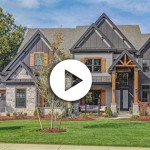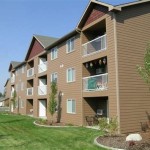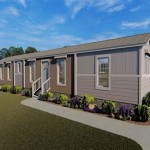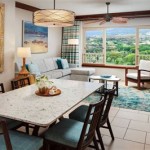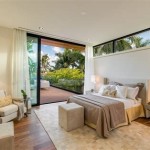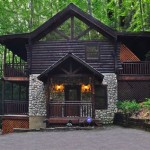Simple 6 Bedroom House Plans: Maximizing Space and Functionality
Designing a large home, particularly one incorporating six bedrooms, requires careful consideration of space, functionality, and aesthetic appeal. While the term "simple" may suggest a lack of complexity, in the context of 6-bedroom house plans, it often refers to efficiency in layout, economy in material usage, and an overall accessible design that prioritizes livability. These plans strive to avoid unnecessary ornamentation and focus on creating a comfortable and practical living environment for large families or multi-generational households.
A well-executed 6-bedroom house plan should seamlessly integrate various zones, including private bedroom areas, communal living spaces, kitchen and dining areas, and practical spaces such as laundry rooms and mudrooms. The arrangement of these spaces is crucial to ensure smooth traffic flow and minimal disruption of personal activities. Accessibility is also a primary concern, especially if the home is designed to be adaptable for elderly or disabled family members.
The following sections will delve into key considerations for designing simple 6-bedroom house plans, exploring aspects such as layout optimization, cost-effectiveness, and adaptability for diverse needs.
Optimizing Layout for a 6-Bedroom Home
The floor plan is the foundation of any house design. For a 6-bedroom home, efficient space allocation is paramount. One common approach is to designate specific wings or zones for different functions. For example, a main floor wing could house the primary suite, along with the main living areas, while upper floors could host additional bedrooms and recreational spaces. Another model involves distributing bedrooms across multiple floors to maximize privacy and minimize noise transfer.
The placement of bedrooms in relation to living areas and other bedrooms is a critical factor. For instance, buffering bedrooms with corridors or strategically placed closets can reduce noise intrusion. A thoughtful arrangement of bedrooms can also cater to different age groups. Children's bedrooms could be located closer to each other, while the primary suite might be placed in a more secluded area for enhanced privacy.
Consideration of circulation is also key. Long, narrow hallways can feel claustrophobic and waste valuable space. Instead, designers strive to create open and flowing layouts using wide doorways and minimal hallway space. The strategic placement of staircases is also important. A centrally located staircase can provide convenient access to all floors, while a staircase tucked away in a less frequented area may be preferable for aesthetic reasons.
The design must also account for the location of bathrooms. Ideally, each bedroom should have access to a bathroom, either en-suite or nearby. Sharing bathrooms, even in a large home, can lead to congestion and inconvenience, particularly during peak hours. The number of bathrooms needed will depend on the expected occupancy of the home and the lifestyle of the occupants. A minimum of three bathrooms is often recommended for a six-bedroom house, but four or more may be preferable.
Beyond the room layout, the orientation of the house on the property plays a significant role in optimizing the layout. Natural light is a key component of a comfortable and inviting home. Maximizing southern exposure (in the Northern Hemisphere) can provide ample sunlight and passive solar heating during the winter months. Orienting living areas towards views and minimizing exposure to harsh weather conditions can also enhance the livability of the home.
Finally, the plan must consider the potential for future expansion or modifications. Designing flexible spaces that can be easily adapted to changing needs can increase the longevity and value of the home. For example, a large bonus room above the garage can be used as a playroom, a home office, or even a seventh bedroom if the need arises.
Cost-Effective Design Strategies
Building a 6-bedroom house can be a significant investment. Simple house plans prioritize cost-effectiveness by employing various design strategies. One key aspect is minimizing the overall footprint of the house. A compact and efficient layout requires fewer materials and less labor, resulting in lower construction costs. Simple, rectangular shapes are generally more cost-effective to build than complex or irregular shapes.
Material selection plays a significant role in controlling costs. Using readily available and affordable materials, such as standard lumber sizes and common roofing materials, can significantly reduce expenses. Avoiding overly elaborate finishes, such as custom millwork or imported tiles, can also help keep costs down. Instead, focus on using durable and aesthetically pleasing materials that are also budget-friendly.
Simplifying the roof design can also contribute to cost savings. A simple gable or hip roof is less expensive to build than a complex roof with multiple gables, dormers, and valleys. Furthermore, a simplified roof design is less prone to leaks and requires less maintenance over the long term.
Efficient use of space can also lead to cost savings. Designing rooms with multiple functions can reduce the overall size of the house without sacrificing livability. For example, a large open-plan kitchen and dining area can serve as both a cooking and eating space, eliminating the need for a separate formal dining room.
Incorporating energy-efficient features is another way to save money over the long term. Properly insulating the walls, roof, and floors can reduce heating and cooling costs. Installing energy-efficient windows and doors can also significantly improve the home's thermal performance. Investing in energy-efficient appliances and lighting can further reduce energy consumption.
Finally, careful planning and execution can help avoid costly mistakes and delays. Thoroughly reviewing the plans before construction begins can identify potential problems and allow for corrections to be made before they become expensive to fix. Hiring experienced and reliable contractors can also help ensure that the project is completed on time and within budget.
Adaptability for Diverse Needs and Accessibility
A well-designed 6-bedroom house should be adaptable to meet the diverse needs of different family members and changing life stages. This includes considerations for aging in place, accommodating disabilities, and providing flexible spaces that can be used for a variety of purposes.
Incorporating universal design principles is crucial for creating an accessible home. This includes features such as wider doorways and hallways to accommodate wheelchairs or walkers, lever-style door handles for easy operation, and grab bars in bathrooms for added safety. Ramps or elevators can provide access to different levels of the house for those with mobility limitations.
A ground-floor bedroom and bathroom are essential for accommodating elderly or disabled family members who may have difficulty navigating stairs. This bedroom should be located close to the main living areas and have easy access to the outdoors. The bathroom should be designed with accessibility in mind, including features such as a roll-in shower, a comfort-height toilet, and ample maneuvering space.
Flexible spaces can be used for a variety of purposes, depending on the needs of the occupants. A bonus room above the garage can serve as a playroom, a home office, a media room, or even a guest suite. A finished basement can provide additional living space, such as a recreation room, a home gym, or a workshop.
The layout of the house should also be adaptable to changing needs. For example, two smaller bedrooms can be combined into a larger bedroom as children grow older, or a formal dining room can be converted into a home office as lifestyles evolve. Designing with flexibility in mind can increase the longevity and value of the home.
Lighting is another important aspect of accessibility. Good lighting can improve visibility and reduce the risk of falls, especially for elderly individuals. Incorporating a variety of lighting sources, such as natural light, ambient lighting, and task lighting, can create a well-lit and comfortable environment. Motion-sensor lights can also provide added safety and convenience.
Finally, consider the long-term maintenance of the home. Choosing durable and low-maintenance materials can reduce the need for repairs and replacements over time. Designing for easy cleaning and landscaping can also make the home more manageable for elderly or disabled individuals.

6 Quartos Sq Ft 6b4b W Estudo Min Espaço Extra Casa Planos De Korel Home Designs Bedroom House Plans 1 Simple

6 Bedroom House Plans Houseplans Blog Com

6 Bedroom House Plans Houseplans Blog Com

6 Bedroom House Plans Houseplans Blog Com

10 Marla House Plan Model N Plans

6 Bedroom Barndominium Floor Plans The 9 Best Available

6 Bedroom House Plans Houseplans Blog Com

Pin On Amigurumi

4 Story 6 Bedroom House Plan

100 Best 6 Bedroom House Plans Ideas In 2024

